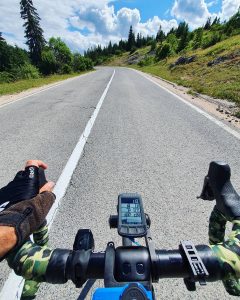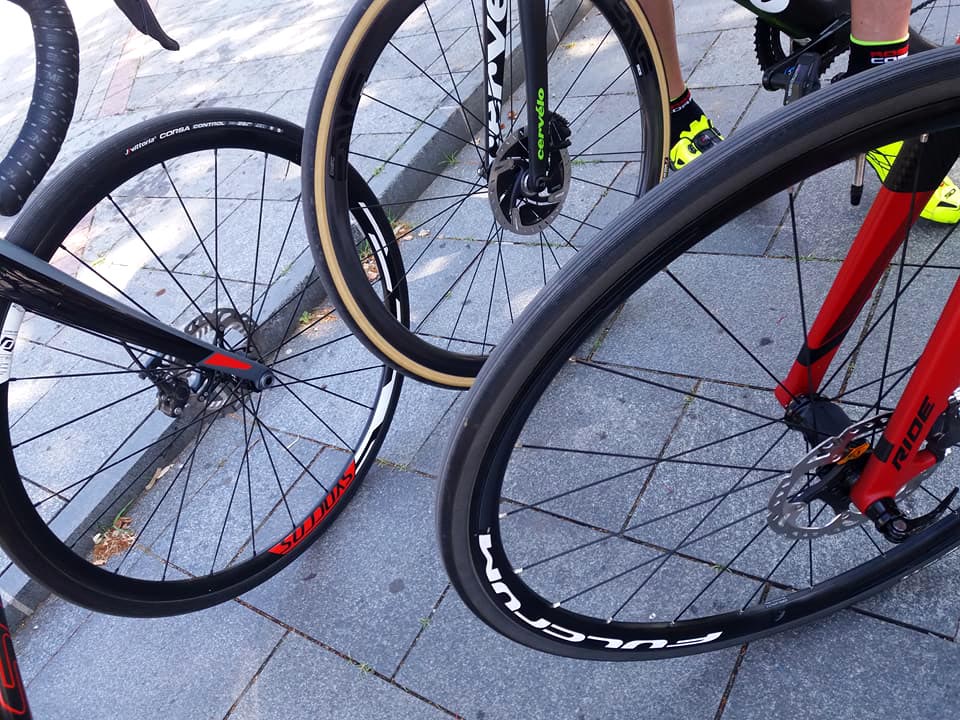Could you take a quick look at this bike, you know that stuff.
– unknown hero
 The sentence that I hear quite often, in one form or another. As simple as the request is, the answer is actually very complex (as you will eventually figure out yourself), because it requires me to analyse the bike like Horatio from CSI Miami, often based on photos that don’t give away much to the viewer, then I have to put everything in an objective context of the user’s needs, estimate a realistic price and elaborate all this to the future road cyclist, which often means that I have to explain them pretty much everything that you will have the opportunity to read in this text… and then I usually don’t find it difficult to, even on my own initiative, find better and/or more affordable alternatives, as if I’m looking for a bike for myself, because as a perfectionist I just can’t help but do my best.
The sentence that I hear quite often, in one form or another. As simple as the request is, the answer is actually very complex (as you will eventually figure out yourself), because it requires me to analyse the bike like Horatio from CSI Miami, often based on photos that don’t give away much to the viewer, then I have to put everything in an objective context of the user’s needs, estimate a realistic price and elaborate all this to the future road cyclist, which often means that I have to explain them pretty much everything that you will have the opportunity to read in this text… and then I usually don’t find it difficult to, even on my own initiative, find better and/or more affordable alternatives, as if I’m looking for a bike for myself, because as a perfectionist I just can’t help but do my best.
Every. Time. The. Same. Scenario.
This kind of consulting often lasts for days, weeks and even months and then in the end… well, you already know the rest of the story. That’s why I recently *finally* decided to stop giving specific advice to anyone anymore, so in this text you won’t read anything about manufacturers and models… too much subjectivity is involved. You will not learn too much about the types of materials, nor about the technical characteristics of groupsets. There are way too many articles on this topic out there and it is to be expected that you have already researched into it, if you are interested in purchasing a (road) bicycle. I’m not even going to try to convince you that the wheel is round!
 But – what you will learn will greatly help you find the ideal road bike, because you will know where to start, what to expect, how to inspect the bike and what awaits you in the short and long term after the purchase. Therefore, gold-worthy (or carbon-worthy) tips. So listen carefully, because I shall say this only once 😉
But – what you will learn will greatly help you find the ideal road bike, because you will know where to start, what to expect, how to inspect the bike and what awaits you in the short and long term after the purchase. Therefore, gold-worthy (or carbon-worthy) tips. So listen carefully, because I shall say this only once 😉
Why a road bike to begin with?
Since this article is a kind of a continuation of the previous article on the choice of bicycle type, let’s just remind ourselves of the following paragraph:
 If you start doing longer and more intense rides on asphalt roads, you will soon find out that city bikes and especially mountain bikes are not suitable for this type of riding, due to their weight, completely unnecessary shock absorbers, high level of tire rolling resistance, inadequate seating position, transmission ratios with too much span and big jumps between cogs, as well as and many other factors, which directly or indirectly negatively affect this type of riding. Road (or racing) bicycles, roughly speaking bikes with “thin tires and curved handlebars” are designed for efficient riding on asphalt roads, for crossing tens or even hundreds of kilometers “in one go”, either recreationally or competitively. You may think that with certain modifications you can adapt your existing bike for this type of usage and you will be right to a degree but wrong for the best part.
If you start doing longer and more intense rides on asphalt roads, you will soon find out that city bikes and especially mountain bikes are not suitable for this type of riding, due to their weight, completely unnecessary shock absorbers, high level of tire rolling resistance, inadequate seating position, transmission ratios with too much span and big jumps between cogs, as well as and many other factors, which directly or indirectly negatively affect this type of riding. Road (or racing) bicycles, roughly speaking bikes with “thin tires and curved handlebars” are designed for efficient riding on asphalt roads, for crossing tens or even hundreds of kilometers “in one go”, either recreationally or competitively. You may think that with certain modifications you can adapt your existing bike for this type of usage and you will be right to a degree but wrong for the best part.
 Already at the first glance, you will notice that the road bike actually offers three positions on the handlebars, each more aggressive than the previous one, compared to the bike you have ridden so far. That fact, combined with the extremely narrow tires and fear of the unknown, will make you think “naah, not for me”. Then you will get a little closer, pick up the bike (“whoah, it’s so light“) and do a quick spin (“oh boy, does it fly!“) – and suddenly you’ve become interested, because you realise that this is a completely different world of cycling. Admittedly, a world that also requires certain riding dynamics, strength to ride uphill and attention to potholes on the road… but it’s all a matter of habit (and well-adjusted seating position).
Already at the first glance, you will notice that the road bike actually offers three positions on the handlebars, each more aggressive than the previous one, compared to the bike you have ridden so far. That fact, combined with the extremely narrow tires and fear of the unknown, will make you think “naah, not for me”. Then you will get a little closer, pick up the bike (“whoah, it’s so light“) and do a quick spin (“oh boy, does it fly!“) – and suddenly you’ve become interested, because you realise that this is a completely different world of cycling. Admittedly, a world that also requires certain riding dynamics, strength to ride uphill and attention to potholes on the road… but it’s all a matter of habit (and well-adjusted seating position).
A small digression, in order to bust the biggest urban myth right at the start – almost everyone knows someone whose friend has got a very expensive bicycle that weighs just 2 kg. Well, I’m sorry to spoil your fun, but – although high-end bikes nowadays often cost way too much – factory bikes that you can find on offer very rarely weigh less than 6 kg with pedals, while the UCI limit for the minimum weight of a race-ready bicycle is 6.8 kg. One of the lightest fully functional bikes is Berk’s unique bike which weighs a shade under 4 kg with pedals, while the lightest road bike in the world is another unique job of 2.7 kg, but of very questionable usability and durability. For the purpose of this article, I should state that we will be talking about bikes generally weighing between 7 and 11 kg (which, if you are used to a terribly heavy bike or don’t have a bike at all, when you grab and lift one with both hands – it will really feel as if it is much lighter than it actually is).
You may find this hard to believe, but I wasn’t born full of wisdom and knowledge :). In the period of discovering the charms of long-distance riding, I used to ride a mountain bike with slick tires, often over 100 km and even up to 160 km a day. I practically found out about road bikes on an occasion when a friend and I came across a group of road racing riders, shyly following their strong pace up a local climb while keeping a distance. Then, one of them, now a good friend, told me that we should come to their cycling club, which we did. We hadn’t even figured out the ins and outs of it but we were already lined up to ride our first road race, on mountain bikes (!) and in ordinary sneakers (road championships back in 1999). I finished the race in front of many regular competitors and that was the reason for me to get my first road bike and start competing very soon after.

Lightweight, preserved, inexpensive – choose only two
“Dude, hold on – is this a story about yourself or about a bike purchase?” The question makes sense but please have faith and keep reading. So, I got a steel bike with downtube shifters – “retro” as we would call it nowadays :). This is also the most basic type of road bicycle that you will encounter during the search for your steed. The bike in question was technologically obsolete but OK to begin with. However, when I tried a much more modern and lighter aluminium bike with integrated brake-shifter levers and more gears (like most of the major racers used to ride back then), I figured out that my existing bike would present a significant handicap for me to achieve the desired performance level next season, so I decided to purchase a “better” bike. Driven by ignorance and enthusiasm, I overpaid a heap of rubbish on which I had to constantly change parts for years, including a failed repair of a cracked frame. It had been bothering me so much that I decided to break it up and take absence from competitive cycling until I managed to build a completely new bike, by my specs down to the very last detail (even the frame was custom-made for me). Anyhow, with a new bike you also get huge amounts of motivation free of charge, so with that bike I made a big wish of mine and a 10-year-old plan come true and proceeded to win several championship titles. Therefore – a perfectly good bike …
…or was it?!
As time went on, so did the development of road bikes. Since I’m not used to changing things often, because I get attached to them, I didn’t even consider replacing the existing bike until at some point I made a “mistake” – I had tried a carbon fibre bike from a colleague and realised how much power I was wasting on my bike and how much faster and more efficient I could become with a more modern bike. But guided by the proverb: “Full me once – shame on you, full me twice – shame on me“, I didn’t want to rush into buying just any carbon bike but continued dreaming about it until I once again managed to assemble a new and current-generation bike, completely according to my ideas, which made me one of the last Mohicans on an aluminium bike back in the day. In any case, we have already concluded that the purchase of a new (better) bike is extremely motivating, so in the upcoming season I managed to achieve my life peak performance (with adequate training, which I will write about in the near future), crowned my efforts with championship titles once again, as well as increased my daily ride length record to 330 km.
Let’s go another round
As it happens, I hadn’t kept this bike for long (at least for my standards), because I got the opportunity to replace it with an even newer, better and lighter one and – surprise, surprise – it turned out that not all carbon bikes were created equal! This is another common misconception in the world of cycling – “carbon is carbon“, but the matter is much more complex. As I said earlier, I wouldn’t like to go too technical with this article, so we’ll just leave it at that. Either way – after a few years, I completely renovated and improved that bike and brought it to, a sort of, perfect spec – for my needs anyway. I fulfilled many ideas, wishes and antics with it and it actually suited me so well that I swore that I would not change it until the potential next bike represented such a drastic change that the change in itself would become a reason for replacement.
 Yep, you’ve guessed it – that day had come… but along with the fact that, for the first time in my life, the decision to replace a bike was psychologically very difficult, because this time the successor was not lighter and with higher class of components, which was practically impossible – it was actually even and a step backwards in that sense, precisely because of these drastic changes in the construction and characteristics of the bicycle itself. However, another “hmm, who would have thought” moment had occurred and it turned out that the absolute weight of the bike is not the main criteria to aspire towards. Combined with the extra motivation, it turned out that I was highly satisfied with precisely the changes I was most afraid of and I’ve once again had one of the most interesting seasons so far. This has brought us to the present, so this autobiography (as far as road bikes are concerned) ends here, at least for now.
Yep, you’ve guessed it – that day had come… but along with the fact that, for the first time in my life, the decision to replace a bike was psychologically very difficult, because this time the successor was not lighter and with higher class of components, which was practically impossible – it was actually even and a step backwards in that sense, precisely because of these drastic changes in the construction and characteristics of the bicycle itself. However, another “hmm, who would have thought” moment had occurred and it turned out that the absolute weight of the bike is not the main criteria to aspire towards. Combined with the extra motivation, it turned out that I was highly satisfied with precisely the changes I was most afraid of and I’ve once again had one of the most interesting seasons so far. This has brought us to the present, so this autobiography (as far as road bikes are concerned) ends here, at least for now.
Enough is enough!
If you read this self-gospel with understanding, you could notice some subliminal messages, i.e. lessons, incredibly important for the purchase of your first or your next bike and I’m sure you’ve been in some of the depicted situations yourself. However, I promised that the story would make sense, so I will summarise it to these very valuable theses, which you have the opportunity to learn completely free :).
- First of all, try to test out a solid road bike on a couple of rides, to see if you even want to go further down that line,
- Your choice will come down to one of the types of bikes mentioned in this story – which one exactly will mostly depend on your budget,
- Bicycles have inevitably progressed during the time and it can honestly be said that a newer bike (of the same class) is better for riding,
- It is hard to perceive that something can be better than what you think is best, until you try better and it changes your perception,
- It is very easy to get drawn to a name, high class components, good design etc – and overlook some much more important aspects of the bike,
- With regards to the above, you should aim to get a bike that is very well preserved or even new, to have as few headaches as possible in the long run,
- If you strive to improve performance or achieve the best results, a better bike can help you with that, but it’s not the most important thing,
- If you are a complete novice, the lightest and most advanced bike will practically make you no faster than a cheaper bike,
- Purchase of a better bike inevitably brings you huge amounts of motivation, so it’s not a bad idea to intentionally start with a cheaper bike,
- You will quickly forget your old bike after purchasing a new one – but of course you will keep all the experiences and memories you’ve gained,
- And last but very, very important – buying a bike is only the beginning of the story – practically it’s a key that opens a Pandora’s box of cycling for you.
This has unintentionally turned out to be a rather long text, by which we have only scratched the surface of the purchase of a bicycle, but it has given you enough information so you would be able to roughly profile a bicycle based on budget, your needs and desires for performance – so go have a search through adverts to see what’s available in your price range. I made a promise to myself and to all of you that I will not go into detailed consulting but I can not resist the desire to share my knowledge and experience, so in the article that will follow I will go more in-depth on what’s of greatest importance when choosing a bike but still without going too much into technical details.
And just so you know that, after all of that, there is still the whole “science” of choosing an adequate size of the frame and adjusting the position, before you will be able to point a finger at a particular bike. So… if you ask someone for “quick advice” about buying a bike…
To be continued…
